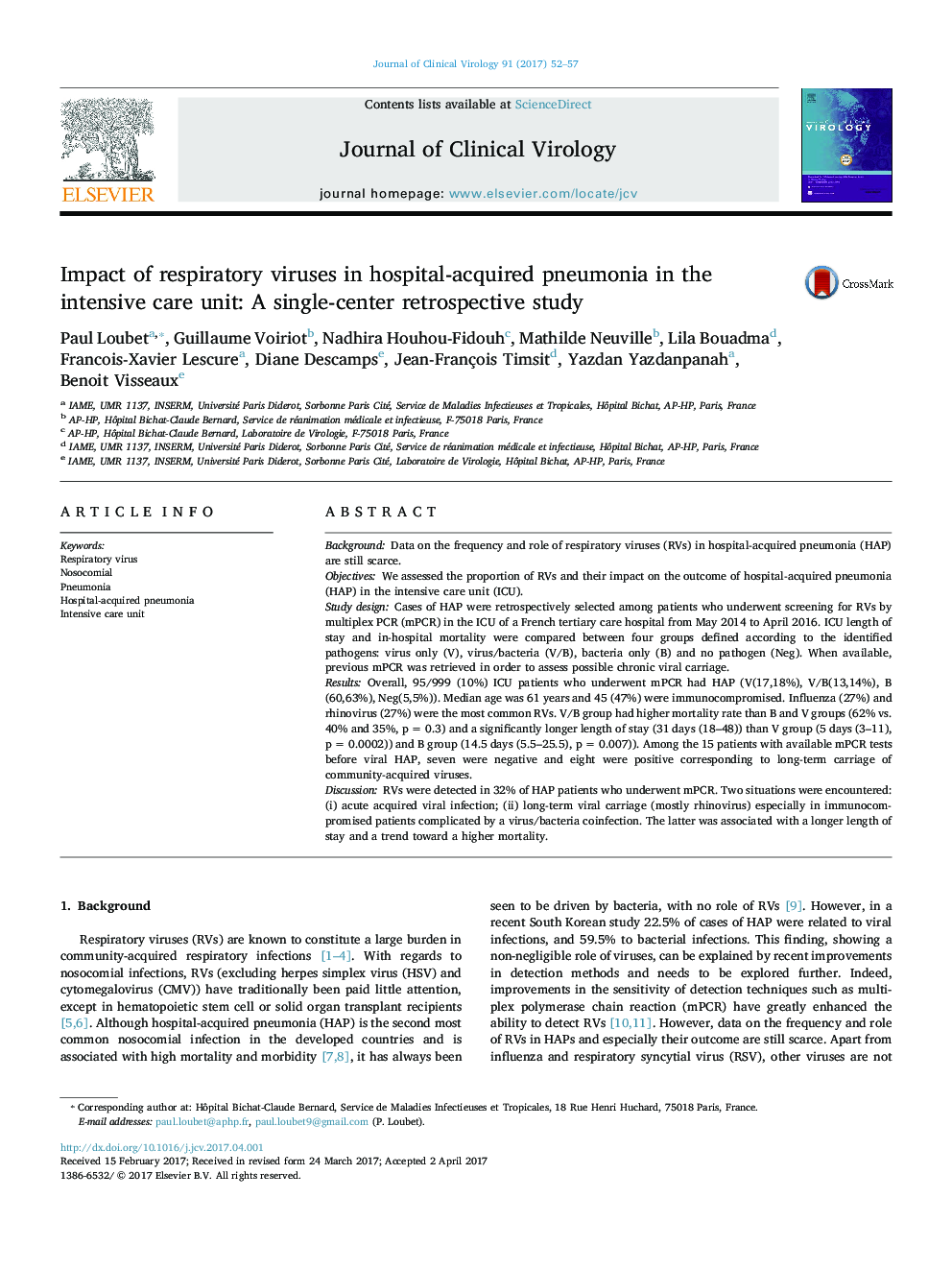| کد مقاله | کد نشریه | سال انتشار | مقاله انگلیسی | نسخه تمام متن |
|---|---|---|---|---|
| 5668074 | 1592335 | 2017 | 6 صفحه PDF | دانلود رایگان |
- Respiratory viruses were detected in 32% of Hospital Acquired Pneumonia.
- Virus/bacteria co-infection was associated with higher length of stay and mortality.
- We distinguished acute acquired viral infection and long-term viral carriage.
BackgroundData on the frequency and role of respiratory viruses (RVs) in hospital-acquired pneumonia (HAP) are still scarce.ObjectivesWe assessed the proportion of RVs and their impact on the outcome of hospital-acquired pneumonia (HAP) in the intensive care unit (ICU).Study designCases of HAP were retrospectively selected among patients who underwent screening for RVs by multiplex PCR (mPCR) in the ICU of a French tertiary care hospital from May 2014 to April 2016. ICU length of stay and in-hospital mortality were compared between four groups defined according to the identified pathogens: virus only (V), virus/bacteria (V/B), bacteria only (B) and no pathogen (Neg). When available, previous mPCR was retrieved in order to assess possible chronic viral carriage.ResultsOverall, 95/999 (10%) ICU patients who underwent mPCR had HAP (V(17,18%), V/B(13,14%), B(60,63%), Neg(5,5%)). Median age was 61 years and 45 (47%) were immunocompromised. Influenza (27%) and rhinovirus (27%) were the most common RVs. V/B group had higher mortality rate than B and V groups (62% vs. 40% and 35%, p = 0.3) and a significantly longer length of stay (31 days (18-48)) than V group (5 days (3-11), p = 0.0002)) and B group (14.5 days (5.5-25.5), p = 0.007)). Among the 15 patients with available mPCR tests before viral HAP, seven were negative and eight were positive corresponding to long-term carriage of community-acquired viruses.DiscussionRVs were detected in 32% of HAP patients who underwent mPCR. Two situations were encountered: (i) acute acquired viral infection; (ii) long-term viral carriage (mostly rhinovirus) especially in immunocompromised patients complicated by a virus/bacteria coinfection. The latter was associated with a longer length of stay and a trend toward a higher mortality.
Journal: Journal of Clinical Virology - Volume 91, June 2017, Pages 52-57
